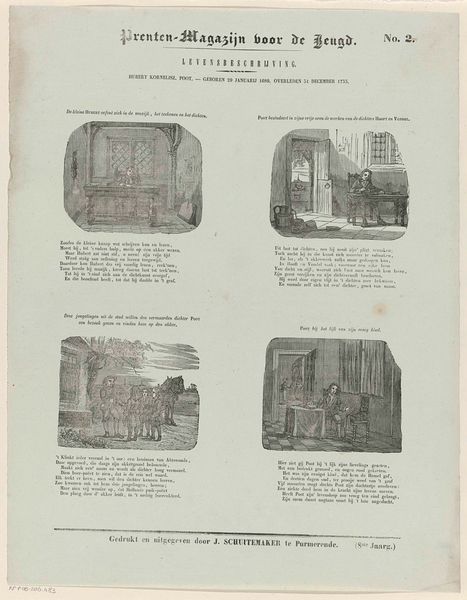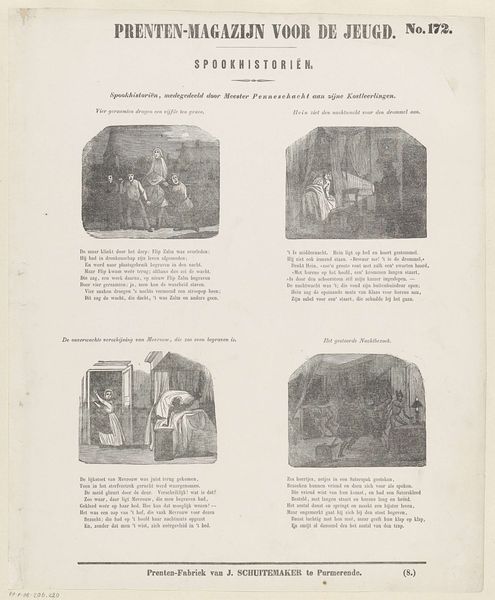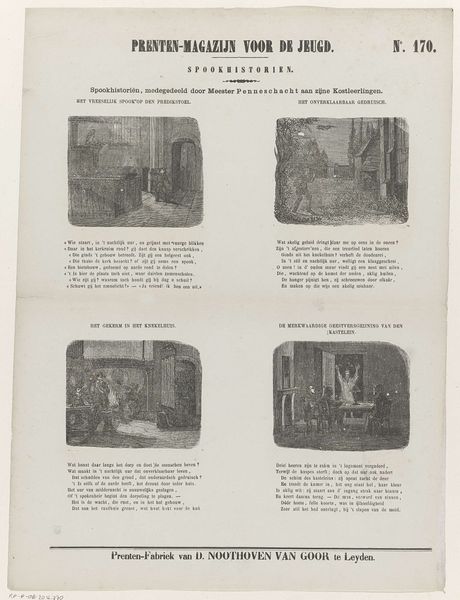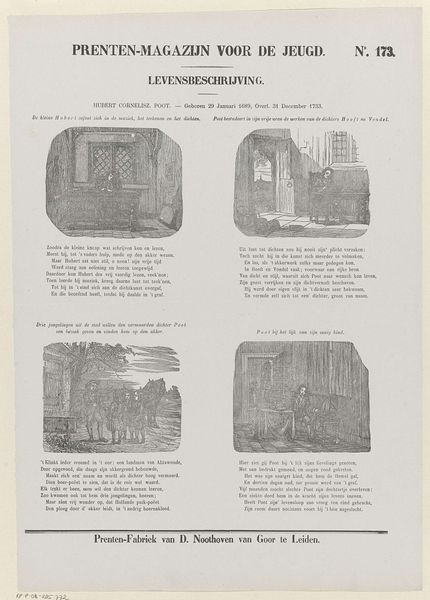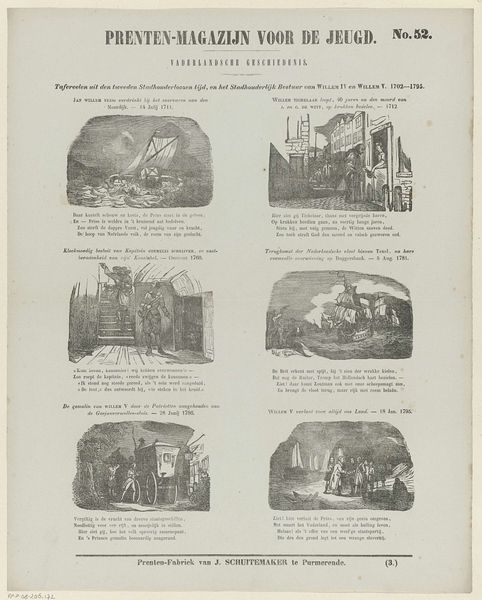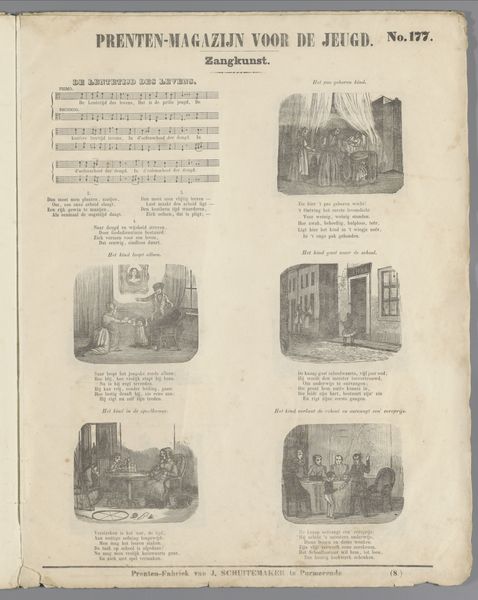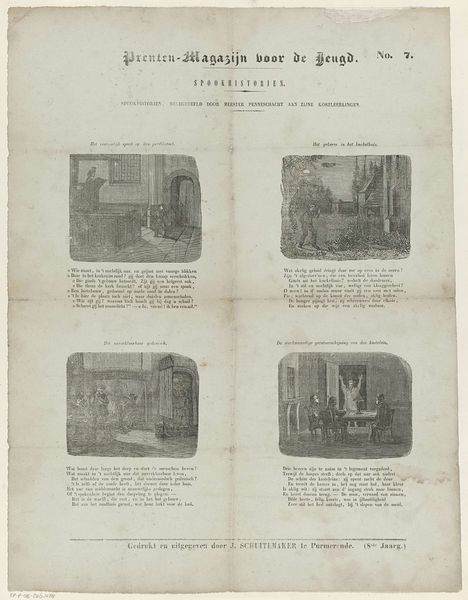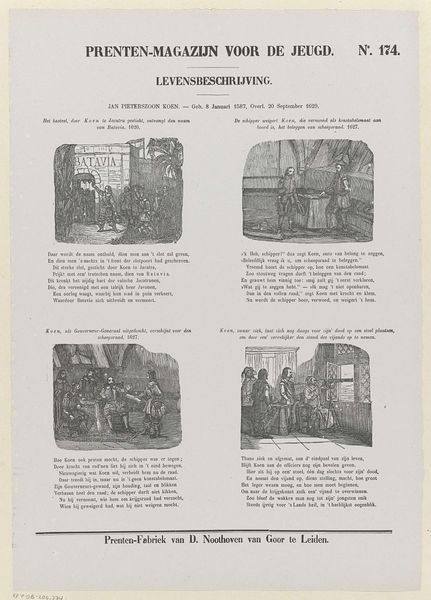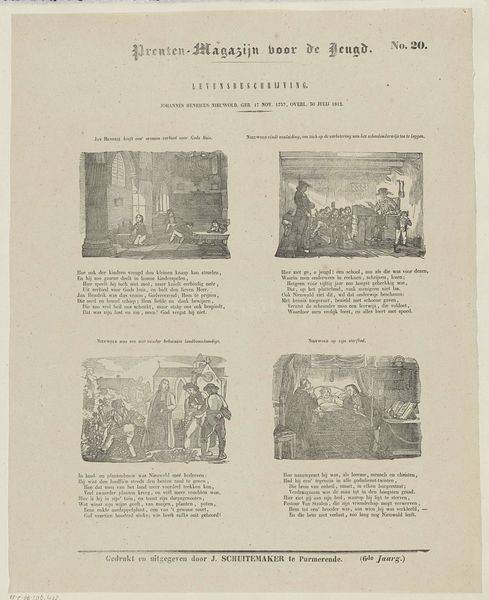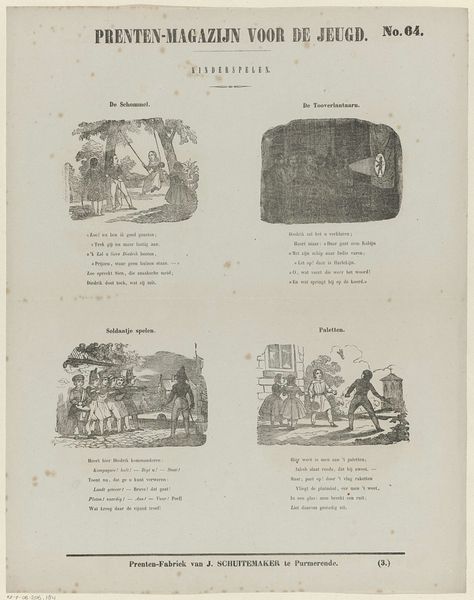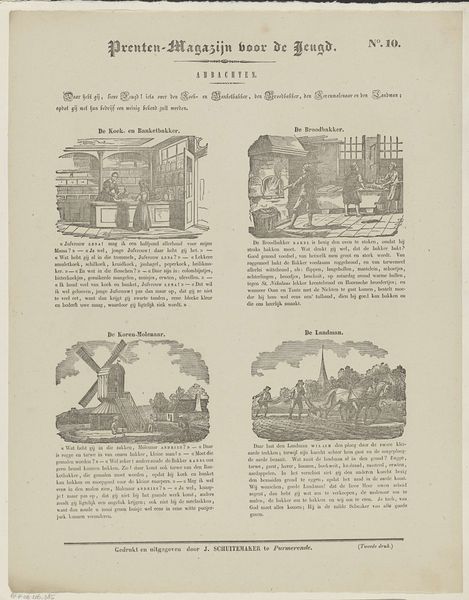
Hubert Cornelisz. Poot. - geboren 29 Januari 1689, Overl. 31 December 1733 1850
0:00
0:00
graphic-art, print, paper, engraving
#
portrait
#
graphic-art
# print
#
paper
#
history-painting
#
engraving
Dimensions: height 428 mm, width 340 mm
Copyright: Rijks Museum: Open Domain
Curator: This 1850 engraving on paper depicts Hubert Cornelisz. Poot, a Dutch poet from the 18th century. The print is titled "Hubert Cornelisz. Poot - geboren 29 Januari 1689, Overl. 31 December 1733" and made by Jan Schuitemaker. It presents several vignettes from his life. There's a pensive, almost melancholic feeling to the work. What strikes you about how it conveys its story? Editor: I am intrigued by its format of sequential scenes; it seems a bit like a graphic novel, only with a biographical intent. How should we interpret history-painting depicted through printmaking intended "for the youth" considering its time? Curator: That's a keen observation! Considering this piece was intended for youth, it seems like Schuitemaker was intentionally molding perceptions of Poot and reinforcing Dutch national identity in his audience. The four panels act almost as hagiography: framing Poot as someone whose life, dedicated to the written word, was worthy of emulation. The choice of engraving allows it to be easily and cheaply reproduced, reaching a broad audience and further democratizing these narratives about exemplary Dutch figures. This tells us a lot about the social function of art at the time. Notice the scenes. What details of Poot's life do they decide to include? Editor: Well, there's Poot as a young boy at his desk writing, then some older boys walking past him… Almost like formative moments shaping his identity. It is almost romanticizing intellectualism? Curator: Exactly! Schuitemaker constructs not just a portrait of a man, but an entire ideology around artistic dedication. This romantic vision also cleverly side-steps deeper issues prevalent at the time, such as class tensions or the societal role of the artist. He invites the viewers –especially the younger audience– to strive, while maintaining the status quo. I also encourage you to consider who Schuitemaker himself may have been depicting and to what extent those views coincide with those he hopes to portray of the artwork. Editor: I didn’t think of it that way. It is amazing to consider the role an artwork has played in molding societal views and identity, both past and present. Thank you for providing these points of discussion! Curator: It’s been a pleasure.
Comments
No comments
Be the first to comment and join the conversation on the ultimate creative platform.
